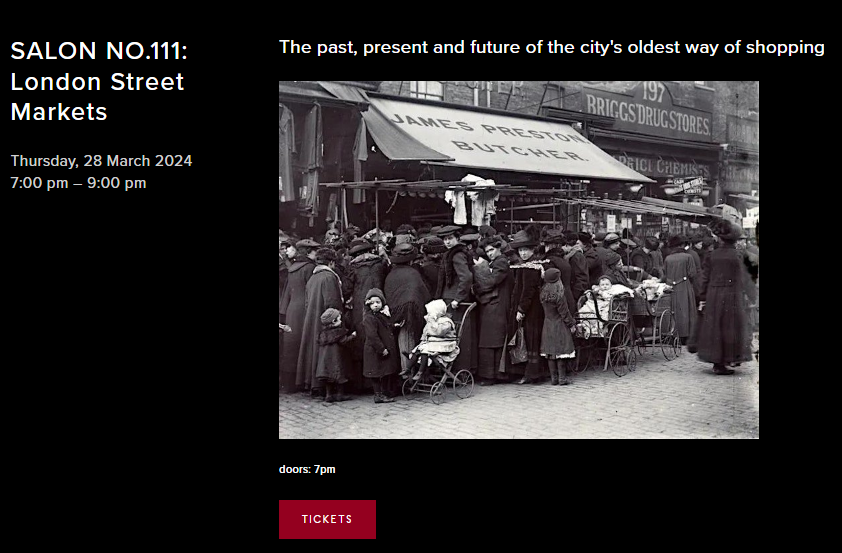
Antique beats, organisers of Salon for the Cit, inspiring events in unusual places, are hosting our last event of the Modern Cockney Festival on an important part of Cockney culture, London’s street markets, with Festival cofounders, Saif Osmani and Andy Green talking about markets’ past and future.
Get your tickets here: https://www.eventbrite.co.uk/e/salon-no111-london-street-markets-tickets-831763957387
Saif Osmani, ‘Why markets – who needs them?’
London’s street markets, an oasis of colour, smells, vibrancy, a beating heart of a community. Or a way of shopping that’s well past its sell-by-date?
London’ oldest known market was Cheapside, possibly established in the 9th century during the reign of Alfred the Great.
In the late Victorian era central London was home to 112 street markets. Now there’s just over 40, with many facing uncertain futures from developers and changing shopping habits.
Yet, why are street markets essential to London’s culture and communities?
Saif explores the back story and history and why he, and other campaigners, fight to save, preserve, and rejuvenate threated markets. He shares his story of struggles, fightbacks, and celebrations of street market culture.
Saif shares his work on community campaigns ranging from save Queen Street to Brick Lane and explores the challenges facing those who believe in street markets for selling cheap and healthy food to local people from across diverse communities, to specialist markets that offer choice, easy access for the next generation of entrepreneurs.
Andy Green, ‘Why we need markets for the future and a new generation of mindful shoppers’
It’s not just markets that need to change. But shoppers as well.
Andy shares some of the stories of London’s historic markets and their significance to London’s story, and his personal recollections growing up in London’s East End.
And reflects on the future. We don’t just need to preserve the old, but invest in future ways to keep markets relevant, vibrant, and alive.
Andy raises the prospect of a new generation of the shopping experience, of places where people go to inject fresh mindfulness, creativity, and social purpose, along with new iterations of markets – marketplaces of social capital where you go to buy extra connectivity and shared communal experiences, new ideas and inspirations, a new era for London’s markets. And there’s more.
Recent studies show how different ways of talking mix with the fresh produce, products, scripts, semiotic signs and street art, from Sylheti, Bangla, Cockney and various other varieties of British English, Italian and more.
In a national atmosphere of increasing policing of languages and nonstandard ways of speaking, from insistence on standard English in schools to the circulation of aggressive anti-migration discourses – often feeding the need to ‘speak English’ – markets are places where languages seem to circulate more freely.
Like the marketplaces of the Proles, in George Orwell’s 1984, markets constitute places of resistance to monolingual cultural norms so often required by mainstream UK culture.
For new migrants arriving in London, markets are a place where you can hear your language and get the sense that you belong. Where children from migrant and working-class families get the chance to take in the sights and sounds of adults speaking different languages, all providing crucial learning and socialisation alternatives to monolingual experiences in the classroom.
Whether you’re a new migrant to London, or a fully-fledged denizen, London’s markets of the future have an important role to play in the diversity, well-being, and vibrancy of London.